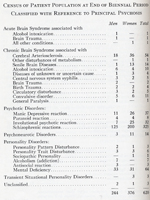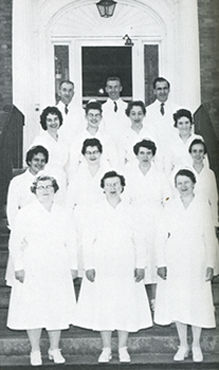By 1960 numerous important advancements in psychiatric care and treatment led to a much changed set of treatments that were administered in the hospital. The insulin unit was closed down and deference was made to newly improved tranquilizers and anti-depressants. The months between June, 1959 and June, 1960 saw a 72% decrease in the number of patients treated with electro-convulsive therapy and a related decrease in x-rays. Alternatively, there was a marked increase in electroencephalograms (EEGs) performed, and 23% of EEGs were abnormal.
Importantly due to the limited number of psychologists employed by the Retreat, group psychotherapy sessions were instituted on all the wards. Besides psychotherapy, other chief responsibilities of the department of psychology included research, contributions to the hospital teaching program, and diagnostic psychological testing which was coming into high demand. Additionally, out-patient services was continually growing and proving successful, and this helped build a stronger connection between the Retreat and the greater community.

